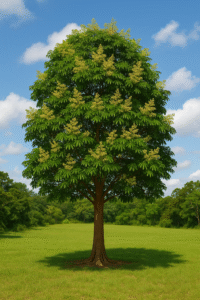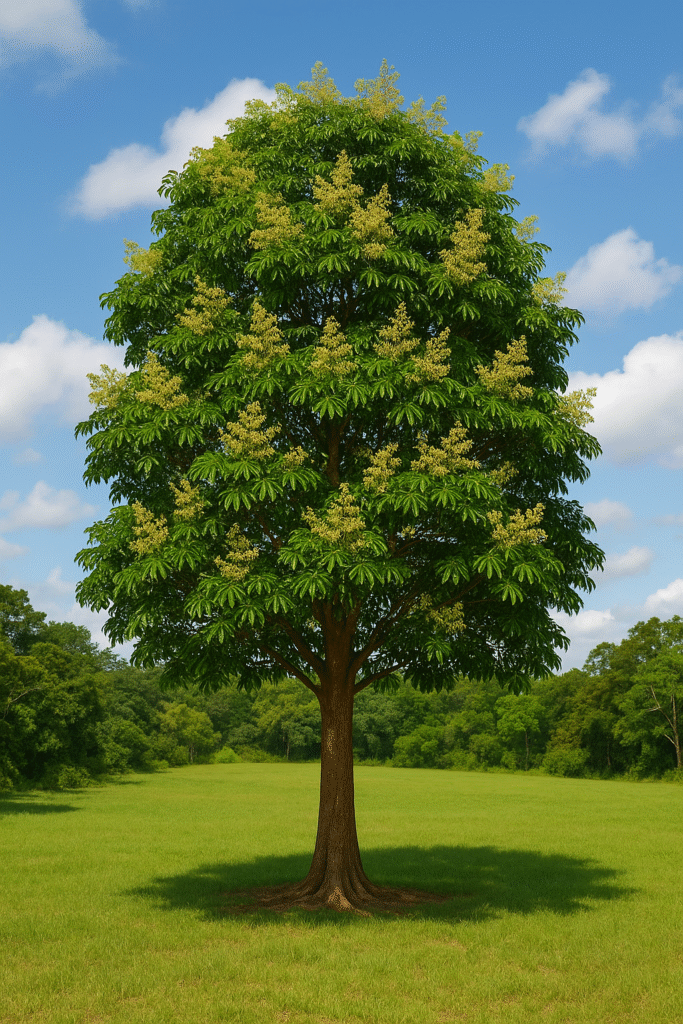Mahogany is one of the most valuable and sought-after tropical woods in the world, known for its durability, natural beauty, and versatility. Used for centuries in the creation of fine furniture, musical instruments, and luxury items, mahogany has earned a reputation for elegance and excellence. However, its history is also marked by environmental challenges and strict regulations. In this article, we explore the characteristics of mahogany, its uses, ecological importance, and how it can be used responsibly.
What is Mahogany?
The term “mahogany” primarily refers to trees in the Swietenia genus, part of the Meliaceae family. The two most well-known species are Honduran mahogany (Swietenia macrophylla) and African mahogany (Khaya spp.). In Brazil, Swietenia macrophylla is native to the Amazon rainforest and has long been considered one of the country’s most commercially valuable timber species.
These are large trees that can grow over 130 feet (40 meters) tall, with trunk diameters exceeding 3 feet (1 meter). The wood is typically reddish-brown, with a fine texture and natural sheen, making it highly desirable for decorative and structural use.
Key Characteristics of Mahogany Wood
Mahogany is considered a noble wood for many reasons:
-
Durability: It resists decay, insects, and fungi, making it ideal for long-lasting construction.
-
Workability: Easy to saw, sand, glue, and polish, providing excellent finishing results.
-
Dimensional Stability: Mahogany maintains its shape well in changing humidity and temperature.
-
Aesthetic Appeal: Known for its warm tone, beautiful grain patterns, and rich luster.
These qualities make mahogany a premium material in woodworking, architecture, and interior design.
Common Uses of Mahogany
Mahogany’s versatility is one of its greatest strengths. Here are some of the most popular uses:
-
High-end furniture: Tables, chairs, cabinets, dressers, and decorative carvings.
-
Musical instruments: Guitars, violins, and grand pianos often feature mahogany for its rich tone.
-
Interior finishes: Flooring, paneling, moldings, and doors.
-
Marine applications: Its water resistance makes it suitable for boats and yachts.
Sustainability and Environmental Concerns
Despite its benefits, mahogany is at the heart of environmental concerns. For decades, it was harvested from tropical rainforests with little to no regulation, contributing to large-scale deforestation in the Amazon.
To combat this, important measures have been implemented:
-
Mahogany was listed under CITES (Convention on International Trade in Endangered Species), requiring permits for international trade.
-
In Brazil, harvesting native mahogany is only permitted under approved sustainable forest management plans.
-
There is growing support for mahogany plantations, especially African mahogany, to reduce pressure on native forests.
African Mahogany: A Sustainable Investment
African mahogany (Khaya spp.), though not native to South America, is gaining popularity as a fast-growing, profitable option for reforestation and commercial forestry in Brazil and other tropical regions.
Benefits of African mahogany:
-
Fast growth and good adaptability.
-
High-quality timber with strong market demand.
-
Profitable harvest cycle in 15–20 years.
-
A legal and sustainable alternative to logging native forests.
Many forestry businesses offer certified seedlings, technical guidance, and partnership models for small landowners.
How to Identify Genuine Mahogany
To avoid buying illegal or counterfeit wood, it’s important to:
-
Check for certification: Products labeled with IBAMA or FSC (Forest Stewardship Council) indicate responsible sourcing.
-
Observe appearance: Genuine mahogany has a reddish-brown color, fine grain, and a glossy surface.
-
Beware of cheap prices: Mahogany is a premium wood. Very low prices could signal fraud or unsustainable practices.
Mahogany in Modern Interiors
While often associated with classic furniture, mahogany is also making a comeback in modern home design. When paired with clean lines, glass, or metal, mahogany adds warmth and elegance without looking old-fashioned.
Some modern applications include:
-
Floating shelves and wall panels.
-
Countertops and bathroom vanities.
-
Minimalist headboards and accent pieces.
-
Custom interior doors and window frames.
Its natural elegance and lasting value make mahogany a smart choice for anyone seeking timeless beauty and craftsmanship.

🌿 Bring the Beauty of Mahogany to Your Home
Looking for a stylish way to highlight your indoor plants?
The Ekirlin 18 cm Plant Pot with a mahogany-texture finish brings elegance and natural charm to any space. Crafted in resin with a drainage hole, removable rubber plug, and soft anti-slip pad, it’s perfect for most plants — combining practicality with design.
🌳 Discover One of the Tallest Trees in the World
Want to learn more about a true giant of nature?
The Jequitibá-rosa, known as the Giant of the Atlantic Forest, can reach over 50 meters in height and live for more than a thousand years. Explore its ecological importance, cultural value, and breathtaking size in our dedicated article.

